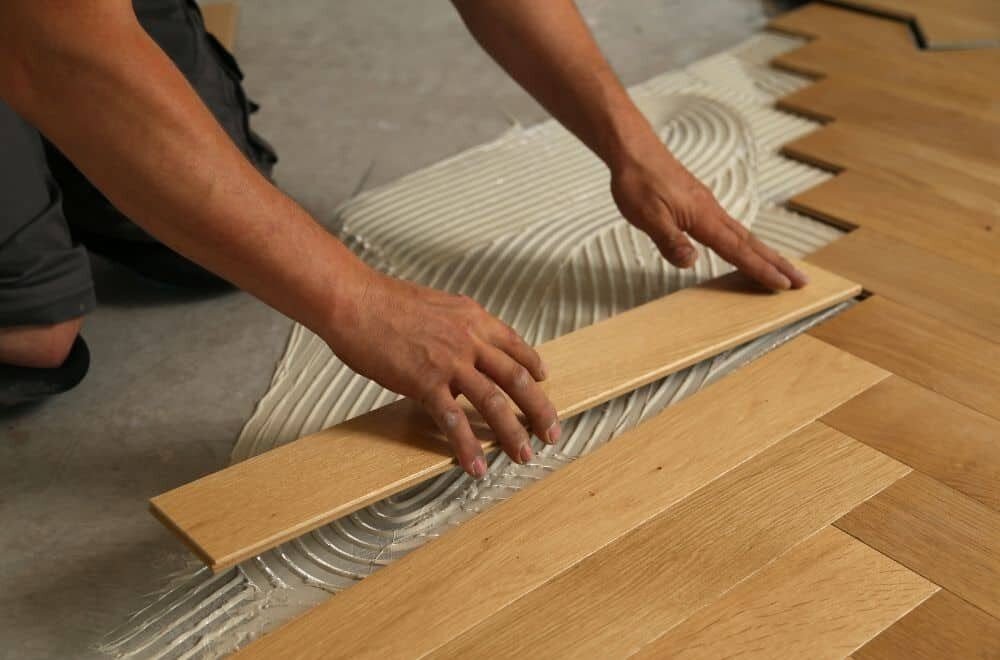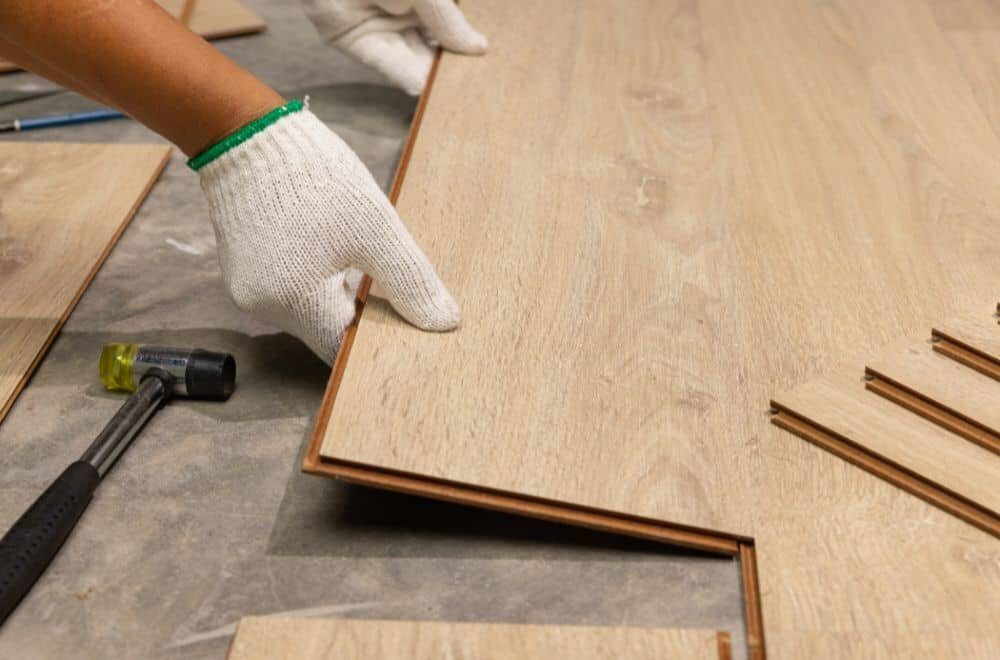If you’re looking to add a touch of charm to your home, a wooden screen door can be a great addition. Not only does it provide a practical function of keeping bugs out while allowing fresh air to flow through, but it can also enhance the overall aesthetic of your home. Fortunately, building a wooden screen door is a relatively simple DIY project that can be completed with just a few tools and materials.
To begin, you’ll need to gather the necessary materials, such as 1×5 or 1×6 boards, a pocket hole jig, and 1 ¼” pocket hole screws. Once you have everything you need, you can start building the frame for the door. This typically involves cutting the boards down to size and using a tongue and groove bit to attach them together. From there, you can add the screen and any additional molding or trim to complete the look.
Overall, building a wooden screen door can be a fun and rewarding project that adds both functionality and style to your home. Whether you’re an experienced woodworker or just starting out, with the right tools and materials, you can create a beautiful and functional screen door that will last for years to come.
Understanding the Basics of a Wooden Screen Door
If you’re looking to add a touch of charm to your home, a wooden screen door is a great way to do it. Not only do they look great, but they also provide ventilation and keep out bugs. Here are the basics you need to know before building your own wooden screen door.
Materials Needed
Before you start building, you’ll need to gather your materials. Here’s a list of what you’ll need:
- Wood: You’ll need enough wood to make the frame of the door. Cedar and pine are both great options for wooden screen doors.
- Screen: You’ll need enough screen to cover the entire door. Fiberglass and aluminum are both good choices for screen material.
- Hinges: You’ll need hinges to attach the door to the frame.
- Handle: You’ll need a handle to open and close the door.
- Tools: You’ll need a saw, drill, screws, and a staple gun.
Types of Wooden Screen Doors
There are two main types of wooden screen doors: traditional and farmhouse. Traditional screen doors have a more classic look, while farmhouse screen doors have a more rustic feel.
Traditional screen doors typically have a simple design with straight lines and may have a crossbar in the middle. Farmhouse screen doors often have a more decorative design with curved lines and may have a window or cutout in the top half.
When choosing a design, consider the style of your home and what will complement it best. Keep in mind that a simple design may be easier to build, while a more intricate design may require more skill and time.
Now that you understand the basics of wooden screen doors, you’re ready to start building your own. With a little bit of time and effort, you can create a beautiful and functional addition to your home.
Step-by-Step Guide to Making a Wooden Screen Door
If you want to add a touch of charm and practicality to your home, building a wooden screen door is a great DIY project. Here’s a step-by-step guide to help you make your own wooden screen door.
Measuring the Door Frame
The first step is to measure the door frame where you want to install the screen door. Measure the width and height of the opening to determine the size of the door you need to build. Keep in mind that the door should be slightly smaller than the frame to allow for proper installation.
Cutting the Wood
Once you have your measurements, it’s time to cut the wood. You will need to cut four pieces of wood for the frame: two for the top and bottom, and two for the sides. Use a saw to cut the wood to the correct length. You will also need to cut two diagonal pieces for added support.
Next, cut the wood for the crossbars that will hold the screen in place. Cut two pieces to fit the width of the door and two pieces to fit the height.
Assembling the Door
Now it’s time to assemble the door. Start by laying out the four pieces of the frame and the two diagonal pieces. Use a pocket hole jig to attach the corners of the frame together. This will eliminate the need for metal corner brackets.
Next, attach the crossbars to the frame using wood screws. Make sure they are evenly spaced and level.
Once the frame is assembled, sand it down to remove any rough edges or splinters. Then, apply a coat of paint or stain to protect the wood and add some color.
Installing the Screen
Finally, it’s time to install the screen. Lay the screen over the frame and use a staple gun to attach it to the crossbars. Make sure the screen is tight and wrinkle-free.
Once the screen is attached, trim off any excess with a utility knife. Then, attach the hinges to the door and the door frame. Hang the door and test it to make sure it opens and closes smoothly.
Congratulations! You have successfully built your own wooden screen door. Enjoy the fresh air and added charm it brings to your home.
Safety Precautions While Making a Wooden Screen Door
When working with wood and power tools, it is essential to take safety precautions to avoid injury. Here are a few safety tips to keep in mind while making a wooden screen door:
Wear Protective Gear
Always wear protective gear such as safety goggles, ear protection, and a dust mask while cutting, sanding, and drilling wood. This will help prevent dust and debris from getting into your eyes, ears, and lungs.
Use Proper Tools
Make sure you are using the right tools for the job and that they are in good working condition. Dull or damaged tools can cause accidents, so inspect them before use.
Follow Instructions
When using power tools, always read the manufacturer’s instructions and follow them carefully. This will help you use the tools safely and avoid accidents.
Work in a Well-Ventilated Area
When sanding or cutting wood, it can create a lot of dust and debris. Work in a well-ventilated area to avoid inhaling dust and fumes.
Keep Work Area Clean
Keep your work area clean and free of clutter. This will help prevent accidents and make it easier to work.
By following these safety precautions, you can ensure that you stay safe while making a wooden screen door.
Maintaining Your Wooden Screen Door
Wooden screen doors are a beautiful and functional addition to any home. They allow fresh air to circulate while keeping insects and debris out. However, to ensure your wooden screen door lasts for years to come, it’s important to maintain it properly. Here are some tips for cleaning, repairing, and replacing your wooden screen door.
Cleaning Tips
Regular cleaning is essential to keep your wooden screen door looking its best. Here are some tips to help you clean your door:
- Use a soft-bristled brush or a vacuum cleaner to remove any dirt or debris from the screen and frame.
- Mix warm water and mild soap in a bucket and use a soft cloth to clean the screen and frame.
- Rinse the door with a hose or a bucket of clean water.
- Dry the door with a soft cloth to prevent water damage.
Avoid using harsh chemicals or abrasive cleaners, as these can damage the wood and the screen.
Repair and Replacement
Over time, your wooden screen door may need some repairs or even replacement. Here are some common issues and how to fix them:
- Loose or broken hinges: Tighten loose screws or replace broken hinges.
- Damaged screen: Patch small holes with screen repair tape or replace the entire screen if it’s severely damaged.
- Warped or cracked wood: Sand down any rough spots and fill any cracks with wood filler. If the damage is severe, you may need to replace the entire door.
It’s important to address any issues with your wooden screen door as soon as possible to prevent further damage and ensure it continues to function properly.
In conclusion, maintaining your wooden screen door is essential to ensure it lasts for years to come. Regular cleaning and addressing any repairs or replacement needs will keep your door looking and functioning its best.
Customizing Your Wooden Screen Door
When it comes to wooden screen doors, customization is key. Not only does it allow you to add your own personal touch, but it also gives you the opportunity to make your door unique and stand out. Here are a few ways to customize your wooden screen door:
Painting and Staining
Painting or staining your wooden screen door is a great way to add color and personality to your home. Before you start, make sure to sand the door down to remove any rough spots or imperfections. If you’re painting, use a primer first, and then apply your chosen color. If you’re staining, make sure to apply a sealant afterwards to protect the wood from moisture.
When choosing a color, consider the overall look of your home. You can go for a bold, eye-catching color that contrasts with your home’s exterior, or you can choose a more subtle color that complements it. Whatever you choose, make sure it’s a color you love and that will make you happy every time you come home.
Adding Decorative Elements
Adding decorative elements to your wooden screen door is another way to customize it and make it your own. Here are a few ideas to get you started:
-
Add a decorative grille: A decorative grille can add a touch of elegance and sophistication to your door. You can choose from a variety of styles and designs, from simple to ornate.
-
Install a kick plate: A kick plate not only protects your door from scratches and dings, but it also adds a decorative element. You can choose from a variety of finishes, including brass, bronze, and stainless steel.
-
Use decorative hardware: Replace your standard door hardware with something more decorative, such as a vintage doorknob or a decorative handle.
-
Add a window: If you want to let more light in, consider adding a window to your door. You can choose from a variety of styles and shapes, from rectangular to oval.
These are just a few ideas to get you started. The possibilities are endless when it comes to customizing your wooden screen door. Just remember to have fun and be creative!



